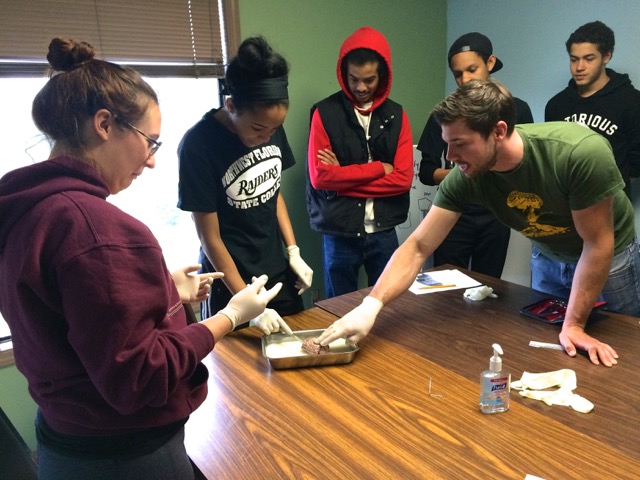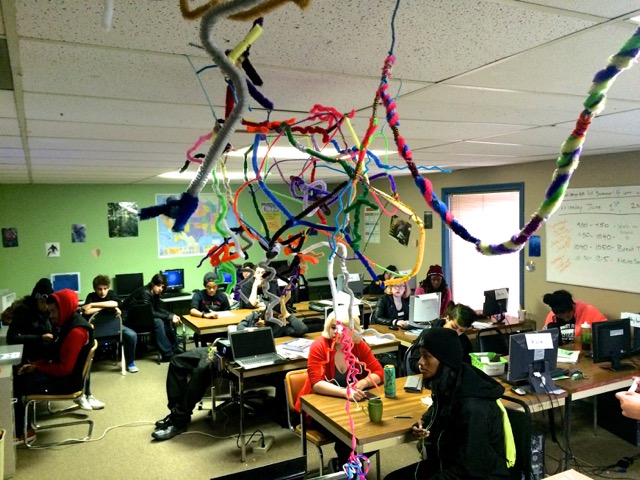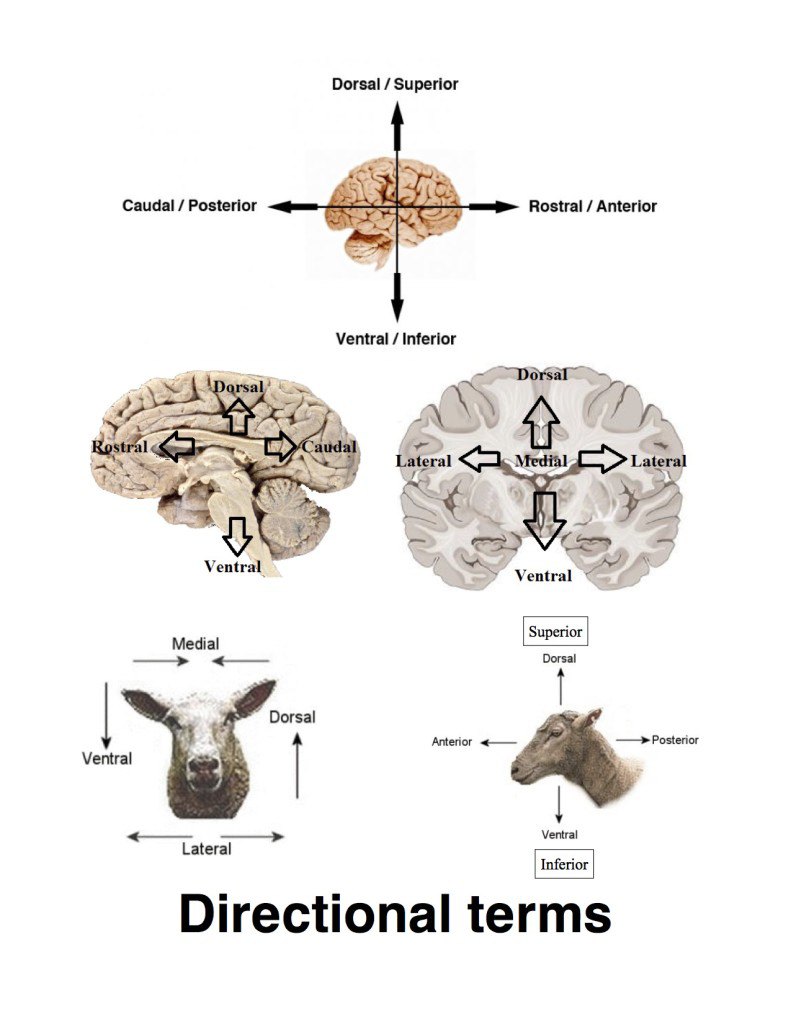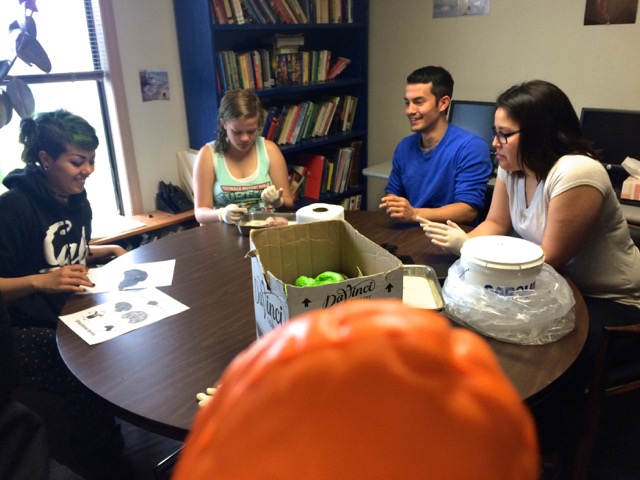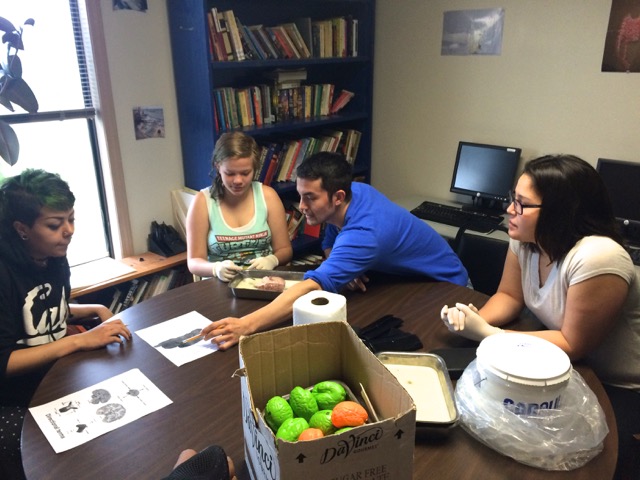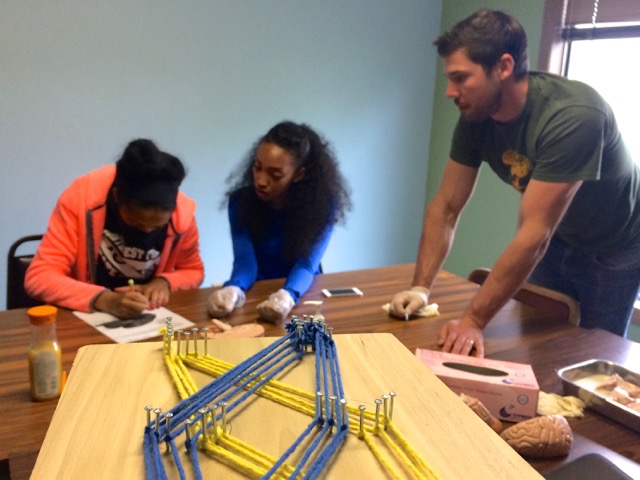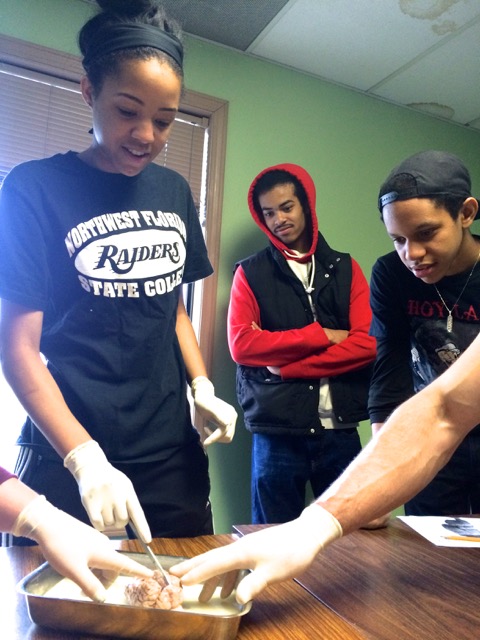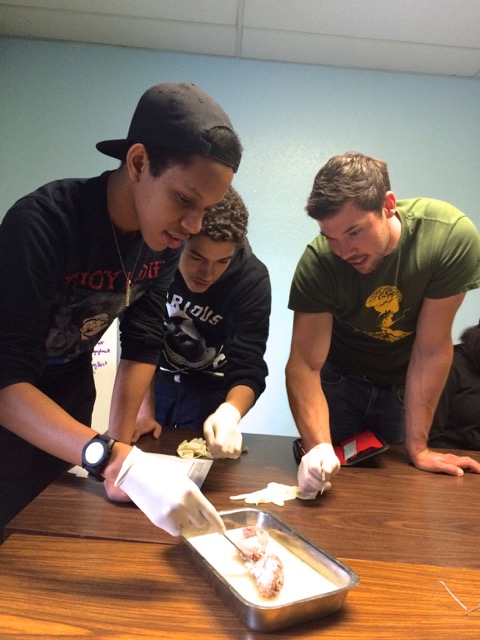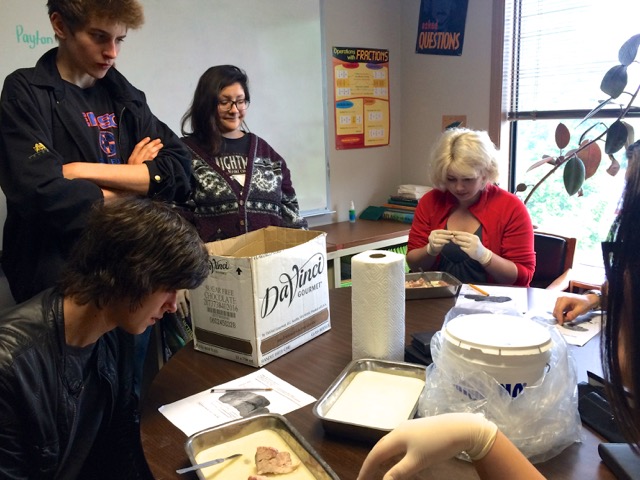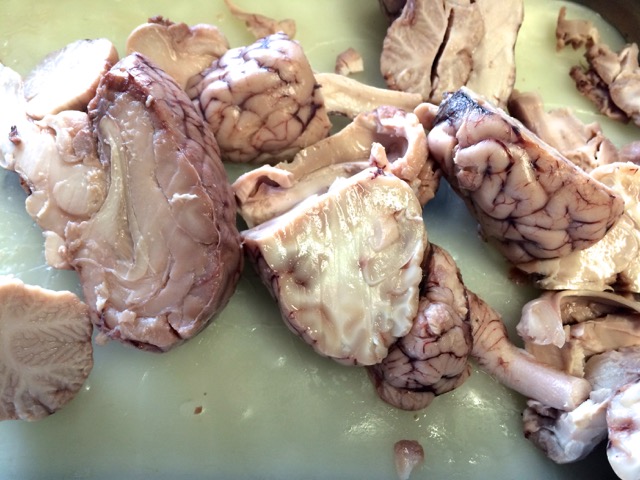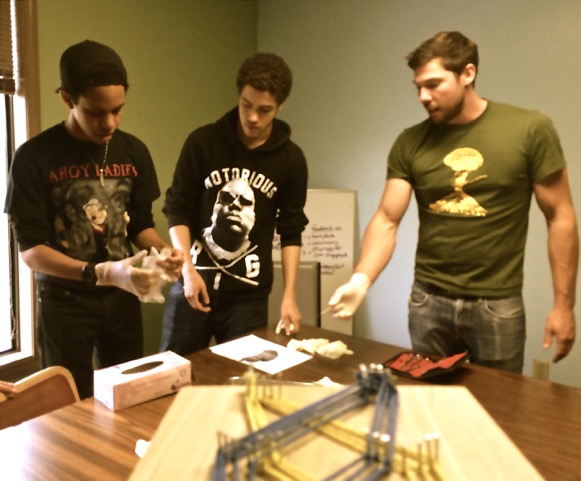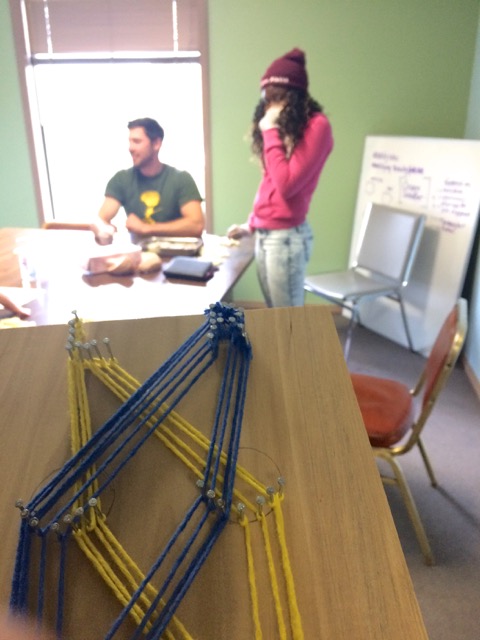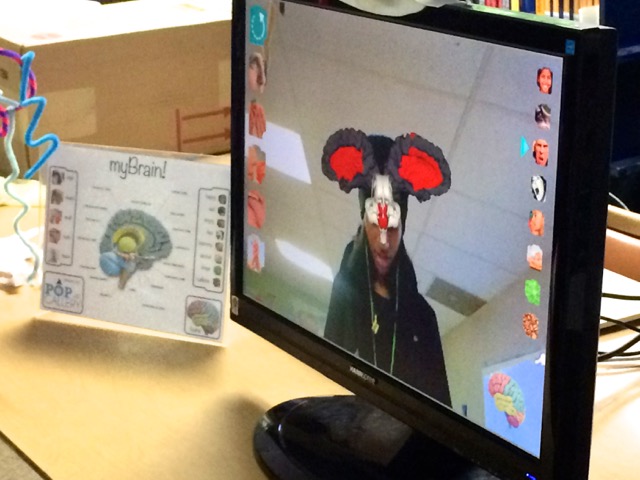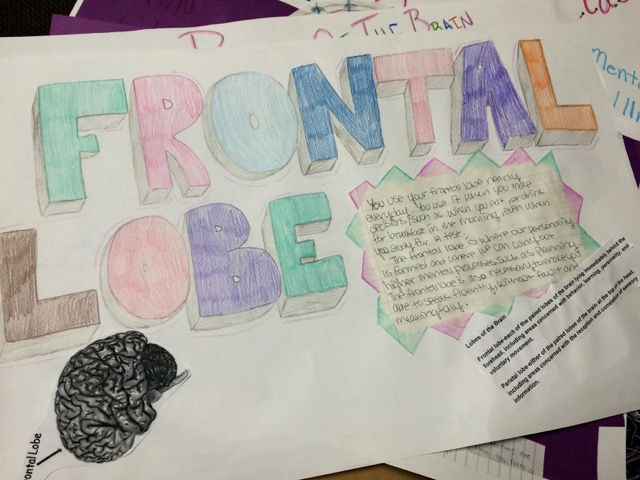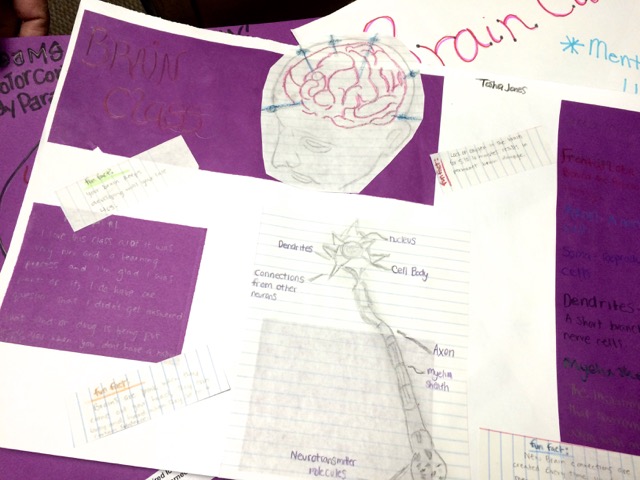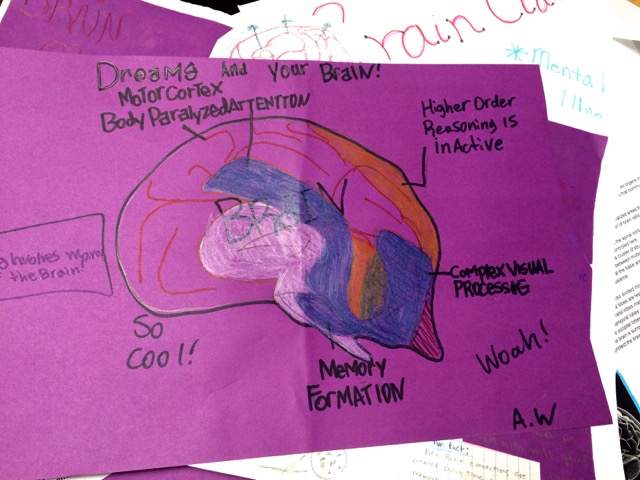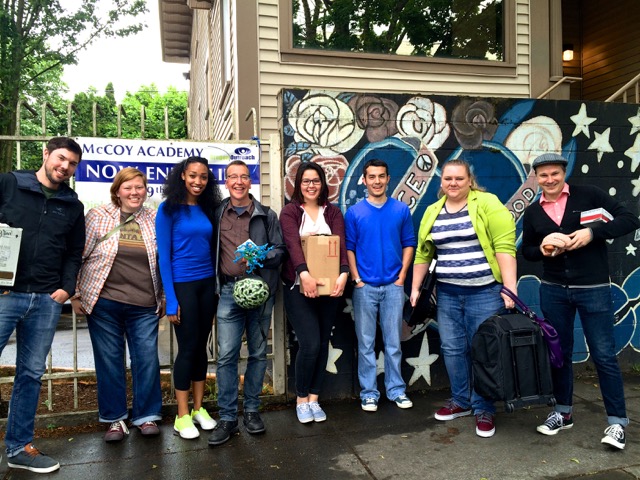We enjoyed one last spring day with the engaged, informed and insightful students we’ve had the pleasure to work with, and learn from, over four weeks of Monday visits to McCoy Academy. The classroom was packed, as several students had brought along friends – to school!
Angela Johnson, a recent graduate of WSU Vancouver, and John Harkness, who is just about ready to defend his graduate thesis at OHSU, first reviewed critical brain lobes and structures. We also introduced relevant anatomical directional terms, in preparation for slicing into the ovine (sheep) brains we’d brought along in a bucket from Carolina Supply…
Students enjoyed a recent news report of “brains found in road” – and after today’s activities, they were well-qualified to identify the cerebrums that led to “Weird News” coverage in the Huffington Post and elsewhere…
Noggin volunteers, including Nathan Allen and Angela Gonzalez from WSU Vancouver, and Rosalie Lee from PSU, along with Angela and John, split off into separate rooms in the old house that serves as the school, to lead dissections with smaller groups of students…
Students located structures in a mid-sagittal cut, including the corpus callosum, thalamus, hypothalamus, pineal gland, specific cortical lobes, optic nerves and chiasm, spinal cord, and the brainstem (midbrain, pons, and medulla). Students followed up with additional coronal, and horizontal cuts, to reveal more subcortical components of the sheep’s brain…
One student, observing another make a slow, mid-sagittal cut, with apparent effort, remarked that “I never knew my brain tissue was ‘steak-thick!'” (it really isn’t – the student with the scalpel was just being careful :)…
To illustrate how visual information from each half (right, or “R” and left, “L”) of visual space ends up on opposite hemispheres of the brain, we used a wood board, nails, and colored yarn…
Brittany Wouden from WSU Vancouver brought along her myBrain! app, and after dissections, students had the opportunity to explore which brain regions and networks were active under different cognitive, perceptual and drug-influenced conditions…
At the end of class, we answered more questions about brains, and behavior (including how hallucinogens generate their compelling perceptual and cognitive effects, and whether the hallucinogenic chemical DMT has been found in humans), and had the chance to view the excellent posters students had prepared based on what we’d been discussing…
We had a GREAT time at McCoy – and plan to return for an end of year barbecue on June 10th. Many thanks to the students and teachers at this remarkable school, for welcoming our graduate and undergraduate volunteers, pipe cleaners, rubber gloves, scalpels – and extra brains..!



